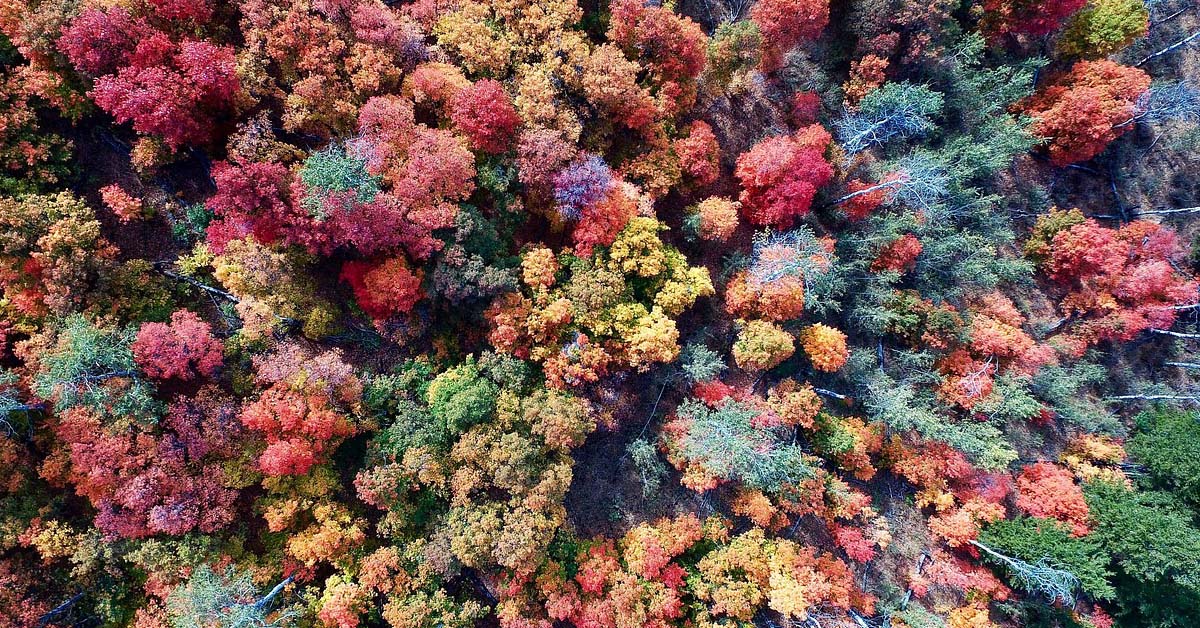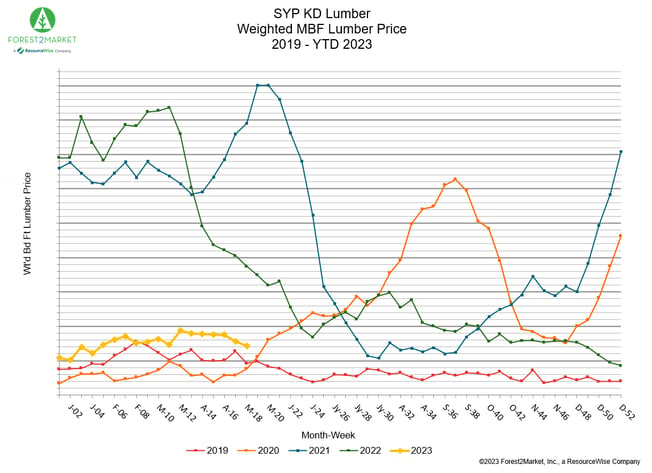
The forestry industry has seen some major changes in recent years. This holds especially true as we all work toward collective solutions that directly respond to the growing call for decarbonization.
Reforestation has often been viewed through the lens of timber production, resulting in the adoption of tranditional plantations serving two primary purposes:
- Enhancing timber yield
- Boosting carbon capture and yields
The latter objective has become increasingly significant to better address climate change through forestry.
At first glance, planting monoculture trees for lumber mills may seem more efficient in terms of land use, thus leading to greater timber yield and carbon capture.
However, recent research suggests that diverse forests may also offer some long-term benefits. To understand why, let's examine how diverse forests perform in terms of carbon sequestration, tree growth, and economic feasibility.
The Benefits of Diverse Forests for Carbon Storage and Tree Growth
Diverse forests can offer numerous benefits including healthy soil, resilience to threats, and productive yields.
Let's take a closer look at these benefits:
Carbon and Nitrogen Storage in the Trees
A research study conducted at the University of Michigan found that the diversity of species in a forest can enhance its overall productivity, potentially leading to increased carbon and nitrogen storage in the soil.
Over the course of a decade, researchers discovered that diverse forests had up to a 32% increase in carbon storage and up to a 50% increase in nitrogen storage. Peter Reich, one of the study’s co-authors and Director of the Institute for Global Change Biology, stated that these findings confirm a long-held belief about more diverse forests.
“We find that greater tree diversity is associated with higher soil carbon and nitrogen accumulation, validating inferences from biodiversity-manipulation experiments,” Reich said. “A greater diversity of species translates into a mixture of different types of trees with different ways of acquiring and storing biomass—both in live trunks, roots, branches, and leaves and in newly dead and decaying plant detritus on and in the soil.”
Carbon and Nitrogen Storage in the Soil as Well
The soil within a forest also plays a critical part in carbon sequestration. During the photosynthesis process in plants, carbon dioxide gas is absorbed into the soil. The soil itself can store up to three times more carbon as even the living plants can. This is why healthy soil is so crucial.
One of the most important elements to this equation is nitrogen. Nitrogen is what enables carbon assimilation—and inevitably tree and plant growth—within forestlands.
Mixed species can be strategically grown and cultivated to promote healthy nitrogen levels within soil. Accordingly, nitrogen-rich soil promotes healthier, stronger target species.
By improving forest diversity, nitrogen is better integrated within the soil. This means both stronger forests and greater carbon sequestration.
Tree Diversity and Timber Yields
According to a broad-scale study on this issue, mixed-species plantations and forests can sometimes be more productive in their overall yields.
Higher productivity is achieved using multiple tactics:
- Identifying complementary tree species to plant together
- Analyzing key factors such as soil health, growth per year, and growth/die rates
- Assessing forest outcomes using molecular and genetic data
As the study describes, “With careful design and appropriate management, mixed-species plantations with three or four species can be more productive and have more advantages over disadvantages. As a result, mixed-species plantations and agroforestry should be broadly promoted and adopted…”
The idea here is not to let forests grow without any human intervention. Diverse forests, like monocultures, must be carefully curated using human technology to succeed.
If done right, this could improve overall yields—a win for foresters. Investing in diverse forestlands can improve broader sustainability and climate goals like carbon sequestration and storage.
Are Diverse Forests Economically Feasible?
Knowing and understanding the climate change management benefits of a more diverse forest ecosystem is one thing. We all want to do our part to improve the state of the world, after all.
But is this approach to forestry economically feasible? Can foresters and landowners stay competitive by shifting their focus to promoting a diverse biome?
A study from the journal Forests sought an answer to these questions. Based on the authors’ research, mixed-stand management (MSM)—another way of saying forest diversity—can offer long-term economic benefits and high returns on forestlands.
At face value, how does this math add up? More trees produce bigger yields, and bigger yields mean more money, right?
But the reality of value and economic feasibility is more complex than just focusing on timber prices. It’s a matter of long-term investment, risk tolerance, and managing the ecological responsibilities concerning climate change.
As stated in the study:
“In our conceptual rationale for MSM, we think of forest management in terms of a portfolio of benefits and risks may show effects of risk compensation similar to diversified portfolios of stocks. Thus, investing only in pine would increase investment volatility compared to a mixed-stand approach if prices are unstable or if prices at harvest are different from those assumed at stand establishment.”
Assessing forestlands, then, is not just about counting the trees. It’s about understanding the benefit of diversity within that forest from a long-term perspective.
The immediate dollar amount from a monoculture of trees may appear higher than from a diverse forest. However, that perspective leaves forest owners more vulnerable to risks like market volatility and fewer market opportunities.
As we’ve seen over the past few years, pricing instability has certainly remained a major factor in lumber prices. The chart below demonstrates some of the biggest shifts we've seen over the past few years:

(A look at southern yellow pine pricing over the last several years shows serious volatility with big spikes and huge drops in prices)
Even worse, a monoculture of the same trees could become especially vulnerable to catastrophic loss from disease, fungus or insect infestation. Part of responsible, diverse forest development includes planning to prevent catastrophic losses from factors like these.
Forestry is a long-term investment. By promoting forest diversity, we can maximize carbon storage and yields for sustainable forestry. While this approach may require a shift in focus for foresters and landowners, it offers a more resilient and stable investment in a changing market.
Insights and Consulting Expertise from Forest2Market
Forest2Market, a ResourceWise company, provides key data analytics and strategic consulting across the global forest value chain. Our experts offer a full range of project support services like location studies and resource availability studies utilizing our robust, historical forestry data.
Our timber price database contains over 20 years of transaction-level details from more than $6 billion in timber sales. This represents the only comprehensive set of industry data collected at the transaction level.
The data provides a full-spectrum view of market dynamics impacting wood fiber prices in North America and Brazil and allows for unparalleled insight into wood supply chains — from the source to final consumption.
Get in touch with Forest2Market today to see how you can can give your business a strategic edge in the ultra-competitive marketplace.


 Harvey Greer
Harvey Greer



